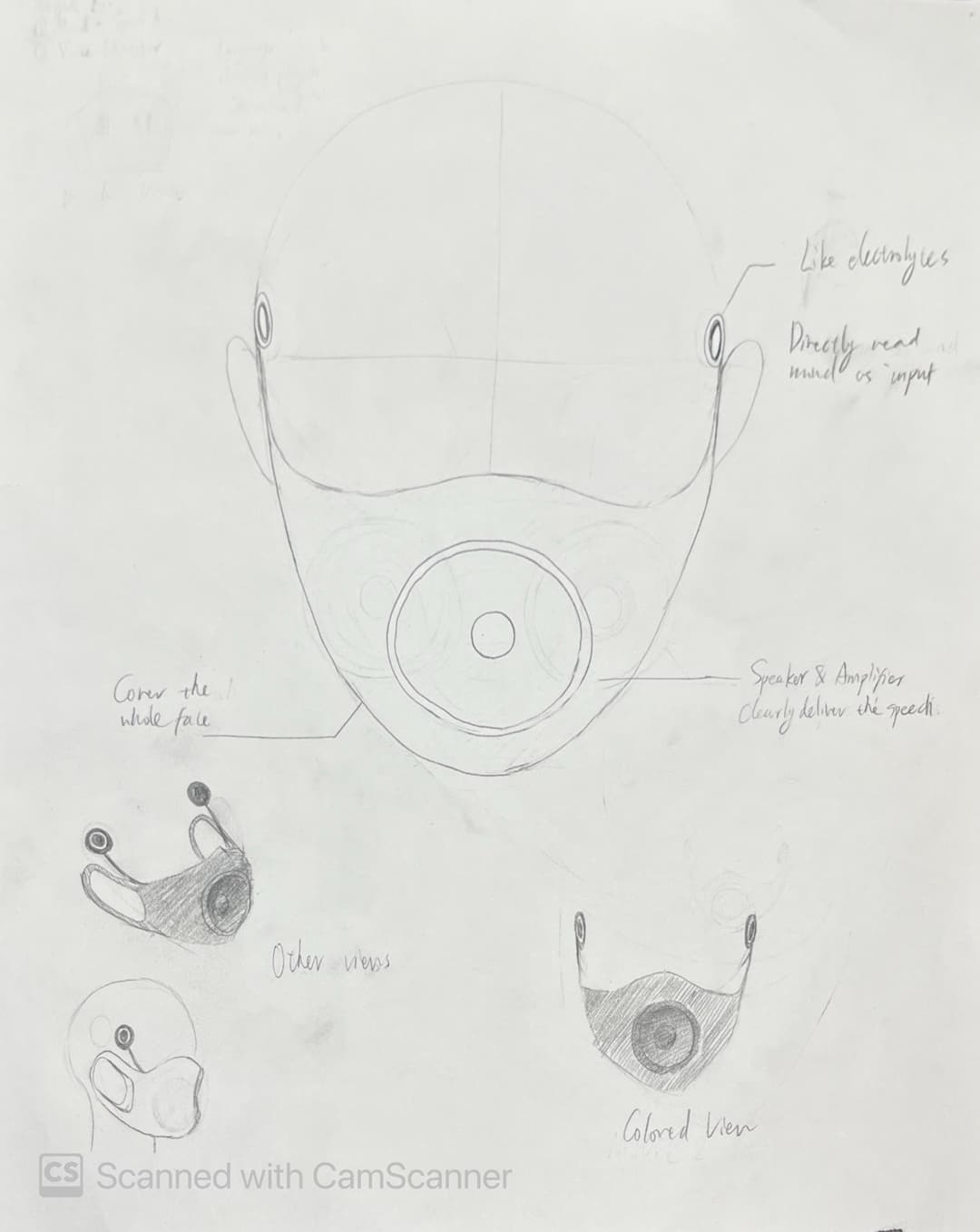Fictional Object: Research & Proposal
Table 1

The object has a soft form with no sharp edges. It is made of fluffy memory foam. The foam is molded into this shape. It is designed to be compressed into any shape and put into the ears. Then, it is able to recover to its original shape. One encounters this object somewhere near the pillow. It arouses a gentle, tender experience which facilitates sleep.
I'm very susceptible to insomnia. I wouldn't be able to sleep if I heard a little voice, especially snoring. Unfortunately, my roommate snores. He always sleeps before me and stops me from sleeping by snoring. A pair of earplugs is necessary for me.

The object takes an elongated form with a sharp head. It is made of light metal, very light and portable. It is created by filling the shell with carbon refill. It allows the users to focus on its sharp head. All of its design flows towards the head. One encounters the object anywhere: writing, creating, recording etc. It offers a flexible experience: you can use it to do anything and create anything.
When I was young, I used the object to randomly scratch figures and symbols out of my imagination. When I was older, I tended to use it to express my thoughts and personality since I don't like talking. I also use it to record some weird vision or dreams I encountered. It is like an alternate way to express myself.

This object has a long curvy seam in the middle and an enclosed form. It's made of stretchable and compressible materials. It's meant to be opened, like a door. Someone won't encounter the object, or even feel its existence. It's a part of them and they have been one since they were born. Others need to read its manual, fearing that it would break. It is an amplifier of emotions and the major way for me to attain social experience.
I'm unsatisfied with my articulation. I'm used to talking to myself at a low volume only I could hear. I'm also used to using this volume when I'm talking to other people. Meanwhile, the pitch of my voice is also very low. I often feel that I can't express what I want to say. When I bring up a conversation, people usually respond: "What did you say?" This object shaped my personality as it is now.
References



Sketches

Table 2
Object Attribute
Description
Audience
People who can't speak, have difficulty in speaking, or aren't good at communication.
Form
A black mask made of lightweight fabrics.
Material
mask: fabrics; speaker cone: polypropylene.
Appeal
Designed to be convenient, accessible, and natural.
Purpose
Helps users express their thoughts loud and clear through brain signal interpretation and speech.
Message
The product is an alternative method for communication.
Location
Used in casual conversations mainly
Usability
Lightweight, portable, and easy to use
Technique
Receives brain signals, interprets them into words, and outputs through the speaker.
Proposal
The major form of this product is a black mask made of fabrics. A speaker cone is installed on the mask and made of light polypropylene materials. This material is advantageous for its lightweight. Two electrodes stretch out from the mask and are used to attach to the users' head. All electronic units are connected to an embedded mini computer. This product is designed for people who can't speak, have difficulty in speaking, or aren't good at communication. It helps the users express their thoughts loud and clear. There have already been technologies with this functionality, like speech generating devices. Stephen Hawking had this device installed on the wheelchair. This product, however, will be more convenient and accessible.The product completes its task in the following process. First, listen to the user by receiving the users' brain signals from the electrodes, just like what happened in EEG. These electrodes are much more powerful and resistant to noises. Second, understand the user: the computer interprets the signals into semantic words and translates them into voices. Third, speak: the speaker outputs these words. Users may use it mainly during normal conversations and sometimes official occasions like public speech or presentations. The product is designed to be light and portable for the users' convenience. The mask-like appearance and choice of voiceline intends to be as natural as possible to reduce the users' burden of using this product.
However, some elements of this product still look unnatural, like the most predominant speaker. It looks like a strange mouth that can't be closed and is maybe screaming or appealing. The metallic texture of this mouthpiece also alienates from the original, organic mouth. This product reduces the experience of human speaking, which is an important portion of human experience. All of these convey a message that this product is still an alternative method.
Bibliography
Speech Generating Devices. BlueCross BlueShield of South Carolina,https://www.southcarolinablues.com/web/public/brands/medicalpolicy/external-policies/speech-generating-devices/. Accessed 28 Jan. 2025.
Electroencephalogram (EEG). Johns Hopkins Medicine,www.hopkinsmedicine.org/health/treatment-tests-and-therapies/electroencephalogram-eeg. Accessed 28 Jan. 2025.
Types of EEG Electrodes: Gel, Water, and Dry. TMSi, 21 Apr. 2022,https://info.tmsi.com/blog/types-of-eeg-electrodes. Accessed 30 Jan. 2025.
Loudspeaker Materials 101: The Cone. MISCO Speakers, Oct 5, 2021,https://blog.miscospeakers.com/speaker-cone-video. Accessed 30 Jan. 2025.
Paper Prototyping



